The sculptures in Crossroads started as one element of an immersive installation I had imagined in 1999. That installation was to consist of a number of large freestanding sculptures based on the figures in my previous work. The rest of the installation was to include some sort of immersive environment which I thought could be made with video projections to cover each wall floor-to-ceiling with images based on my digital work of the time. These images were to be slowly-moving animations where the motion was to be a slight acceleration of the moving landscape: trees and plants blowing in the wind, clouds, sun- and moon- rise and set, constellations changing positions, and so on. I had also planned to collaborate with my wife—poet, musician, and multidisciplinary theatre creator Lia Pas—on a soundscape. In hindsight this project may have been too ambitious for the time and place I was working in. But despite the fact that by 2002 I had not yet realized any aspect of the project, the idea of taking my figures off the wall or out of the computer screen remained.
Having made The Meeting Place group of small sculptural figures in 2002, I wanted to make similar figures, but large. I applied to the Saskatchewan Arts Board for a modest grant to pursue this idea. I received the funding and completed the work in 2002, and in 2006 wrote extensively about the project. I self-published this document—which formed the core of my project report to the Saskatchewan Arts Board—in limited quantities in May 2006 as Crossroads: A Project by Ed Pas. Because the text that follows is mostly a series of slightly edited excerpts from that document, I would like to apologize anyone who has read that document for the repetition.
Within my project plan I wanted to make prototype large freestanding wooden figures, experimenting with their construction and surface treatment. After completing the exploratory work, I planned to make a number of finished figures, towards partial completion of an installation piece. The reality was different from the plan, and in this case I completed all of my goals as well as pursuing some further projects. I did the exploratory work I had outlined, and not only did I complete a number of finished pieces, I managed to finish enough for an installation. I exhibited the installation under the title Crossroads in July 2002 as a Member’s Project at AKA Gallery in Saskatoon. Within the exhibition space I did an improvised sound and movement performance with Lia Pas. In addition to the installation and performance, I began a video project based on the installation. This video, done in collaboration with Saskatoon-based video editor Jennifer Prokop, is complete up to the rough edit stage.
The actual figures are made from standard construction spruce which I made into modular thick-ply panels approximately sixteen inches (40cm) square and four-and-a-half inches (11.25cm) thick. I assembled these panels into the basic figure shapes, marked them and then took them apart in order to cut them to shape on a band saw. I then reassembled them to ensure that they fit together and that the transitions from one panel to the next were smooth. For display, they are held together with easily-removed bolts that owe a debt to IKEA furniture. I worked this way for a number of reasons. First of all, I was limited by the size of my woodworking equipment and studio. Secondly, large solid blocks of lumber were more difficult to procure, and I liked the idea of using generic materials. Thirdly, I wanted the sculptures to be easy to transport, install, and uninstall. And finally, related to ease of assembly, one of my early plans for this project was for the pieces to be completely modular. Inspired by my son’s adventures with Lego, I had planned for interchangeable parts so that not only would the installation be mutable, so would the individual figures. I abandoned the concept of full modularity for this work because it broadened the scope of the project to an unmanageable size, but I plan to attempt to integrate the idea in future work.
There were a number of factors influencing my choice of Crossroads for a title.1 The piece was a thematic extension of my most recent previous work, where I had already begun to take my work off the wall and into three dimensional sculptural space with the small multi-part sculpture The Meeting Place (2002). My work at the time was exploring themes of relationships between people, creatures, places, and so on, and as such I felt that a crossroads was similar to a meeting place, and that thematically it would be a good context in which to situate these figures. I didn’t want the figures to simply be placed in an exhibition space, devoid of context. A crossroads is a place where people assemble, but assembly is rarely their purpose. They come together by chance and soon move on.
In this project I found parallels to my own artistic practice in that I found myself at a crossroads. I was in motion but possibly needing to change direction. I had been creating work in a similar vein, progressing at what seemed like a linear rate, for a number of years. At the time I was working on this project, I felt a need for change. This is one reason I pursued installation work over a paintings-on-walls type of project. I wanted to shake up my practice, and working on Crossroads forced me to examine some of the assumptions behind the work I had been doing as well as look at where I wanted to go. I found myself looking at all aspects of my practice, especially media and methodologies, my focus and perspectives on the practice, and even my marketing strategies and potential venues.
The video aspect of this project wasn’t part of my original plan but grew out of it. I consider it to be a spin-off project, but as a work of art I consider the video to be an extension of ideas I was exploring with the mutability of the sculptural installation. The video started with a conversation I had with video editor Jennifer Prokop about shooting some documentary video footage of the exhibition. I told her that I felt that the best documentation is always a creative work, and that it sometimes requires as much energy and thought as goes into the work it is documenting. From there we talked about ways we could create footage that would stand on its own. We decided to approach it as a visual poem exploring the interplay of the figures through light and shadow, rearrangement, layering, and motion. Now, nearly four years after making the preliminary edits, I’m revisiting the footage in preparation for completing the final edit. I am also working with British composer Andrea Rushton towards creating a soundtrack.
Reflecting on this project and its public reception I found that people come to any work with assumptions about what it will or should look like. This was no different than when I had focussed my practice on painted and carved wooden assemblages. Notwithstanding the interpretive content of my work, until my Crossroads exhibition I think people saw me mostly as an artist concerned with colour and texture. Granted, the surface decoration of my painted assemblages is very seductive, but surface is only one element of many. People kept telling me they thought that the Crossroads figures—bare, unpainted wooden figures with visible bolts holding them together—were at a preliminary stage, that they were still a work in progress. I found myself repeatedly defending or explaining my creative choices in the work.
While I had considered carving and painting the pieces, and had done some early prototypes that way, as the project developed I moved away from decorative concerns to explore the idea of figures in space. The work became about the figures, their shapes, and their relationship to each other and to the viewer in the space. I had no intention to distract from this interplay by giving my usual attention to lush colour and intricate texture. I wanted people to pay attention to shape and dimensionality, how some of the figures loomed over viewers—one piece was over eight feet (240cm) tall—and how some were as small as children. Because this fell outside of people’s expectations, the installation confused them. They were shocked and surprised that I considered the pieces finished. I kept getting questions like How are you going to carve them? or What colours are you going to paint them? I found that people who had seen any of my previous work were so used to the surface treatments that they expected them in everything I did. People new to my work did not have any of these assumptions or questions. They took the work at face value and many gave me positive feedback.
Around the latter half of 2002, shortly after I completed the rough edits of the Crossroads video, my wife and I started preparations for our 2003 move to Japan. The combination of lack of studio time as we brought one chapter of our lives to a close combined with my desire to not make any more pieces that would necessitate storage, meant that after Crossroads I produced very little new work until I started Encounters in 2005.

Crossroads, sparse grouping (2002)
Installation view at AKA Gallery, Saskatoon
Laminated and bolted spruce, variable size (Individual figures approximately 2.5 to 8 feet (75cm to 240cm) tall)
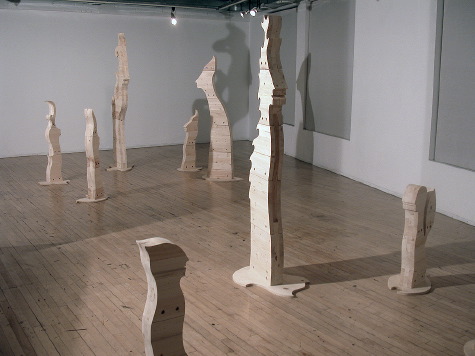
Crossroads, sparse grouping (2002)
Installation view at AKA Gallery, Saskatoon
Laminated and bolted spruce, variable size (Individual figures approximately 2.5 to 8 feet (75cm to 240cm) tall)
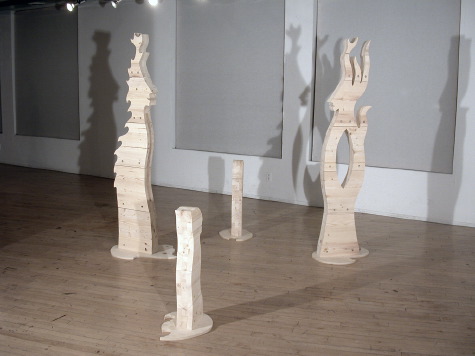
Crossroads, sparse grouping (2002)
Installation view at AKA Gallery, Saskatoon
Laminated and bolted spruce, variable size (Individual figures approximately 2.5 to 8 feet (75cm to 240cm) tall)

Crossroads, sparse grouping (2002)
Installation view at AKA Gallery, Saskatoon
Laminated and bolted spruce, variable size (Individual figures approximately 2.5 to 8 feet (75cm to 240cm) tall)
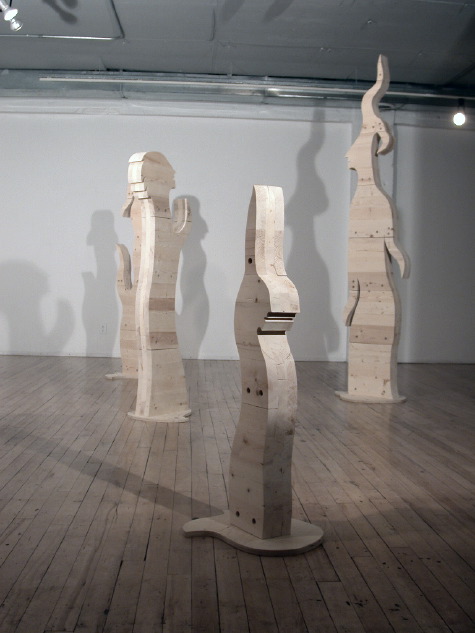
Crossroads, sparse grouping (2002)
Installation view at AKA Gallery, Saskatoon
Laminated and bolted spruce, variable size (Individual figures approximately 2.5 to 8 feet (75cm to 240cm) tall)
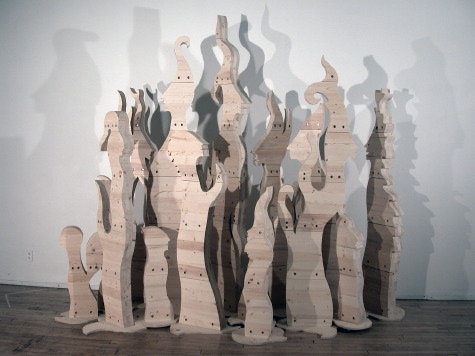
Crossroads, dense grouping (2002)
Installation view at AKA Gallery, Saskatoon
Laminated and bolted spruce, variable size (Individual figures approximately 2.5 to 8 feet (75cm to 240cm) tall)
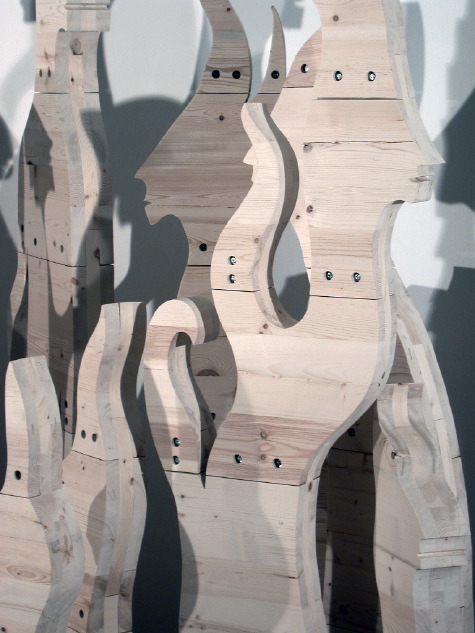
Crossroads, detail (2002)
Installation view at AKA Gallery, Saskatoon
Laminated and bolted spruce, variable size (Individual figures approximately 2.5 to 8 feet (75cm to 240cm) tall)
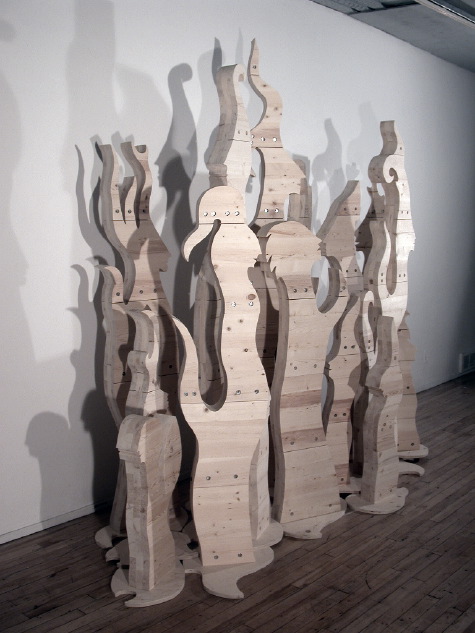
Crossroads, dense grouping (2002)
Installation view at AKA Gallery, Saskatoon
Laminated and bolted spruce, variable size (Individual figures approximately 2.5 to 8 feet (75cm to 240cm) tall)
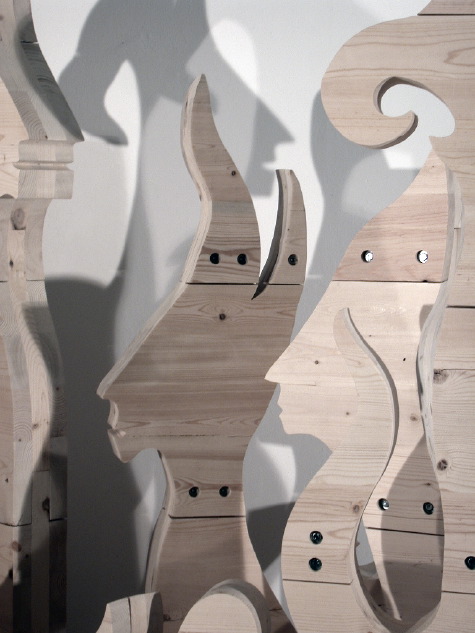
Crossroads, detail (2002)
Installation view at AKA Gallery, Saskatoon
Laminated and bolted spruce, variable size (Individual figures approximately 2.5 to 8 feet (75cm to 240cm) tall)
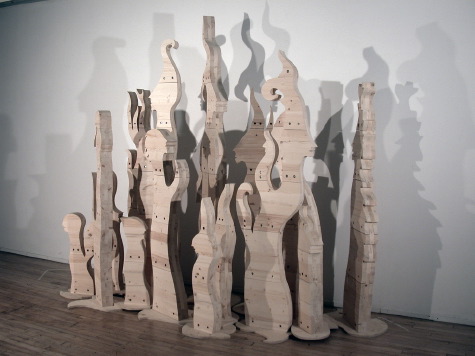
Crossroads, dense grouping (2002)
Installation view at AKA Gallery, Saskatoon
Laminated and bolted spruce, variable size (Individual figures approximately 2.5 to 8 feet (75cm to 240cm) tall)
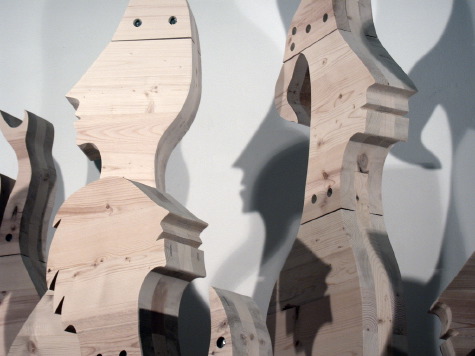
Crossroads, detail (2002)
Installation view at AKA Gallery, Saskatoon
Laminated and bolted spruce, variable size (Individual figures approximately 2.5 to 8 feet (75cm to 240cm) tall)
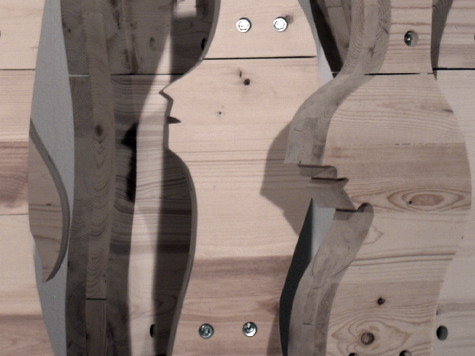
Crossroads, detail (2002)
Installation view at AKA Gallery, Saskatoon
Laminated and bolted spruce, variable size (Individual figures approximately 2.5 to 8 feet (75cm to 240cm) tall)
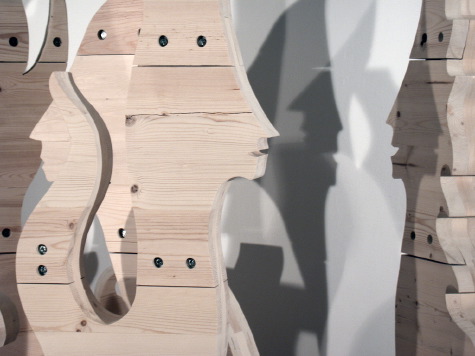
Crossroads, detail (2002)
Installation view at AKA Gallery, Saskatoon
Laminated and bolted spruce, variable size (Individual figures approximately 2.5 to 8 feet (75cm to 240cm) tall)
FOOTNOTES
- It was not until much later that I became aware of the universally-panned 2002 movie of the same name, starring pop singer Britney Spears. ^